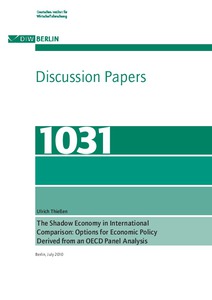The shadow economy in international comparison: options for economic policy derived from an OECD panel analysis
"Building on new behavioral and institutional theories, using a data set of about 450 variables and augmenting the Sala-i-Martin definition of robustness, we find evidence in support of the hypothesis that the standard causes of the shadow economy (SE), taxes, the administrative burden and labo...
| Main Author: | |
|---|---|
| Institution: | ETUI-European Trade Union Institute |
| Format: | TEXT |
| Language: | English |
| Published: |
Berlin
2010
DIW |
| Subjects: | |
| Online Access: | https://www.labourline.org/KENTIKA-19184975124919021579-The-shadow-economy-in-internat.htm |
| Summary: | "Building on new behavioral and institutional theories, using a data set of about 450 variables and augmenting the Sala-i-Martin definition of robustness, we find evidence in support of the hypothesis that the standard causes of the shadow economy (SE), taxes, the administrative burden and labor market regulations, are not per se crucial in determining the size of the SE. There are many other influences with a consistently estimated plausible sign and whose quantitative impact appears to be even larger and more significant than that of the standard causes. Many of the robust influences emanate from relatively new theories such as elements of direct democracy, social interaction effects, moral aspects, and happiness, and from the institutional literature on the relative importance of specific institutions for economic performance. Most of them can well be influenced by governments. Hence, in order to reduce the SE and tax avoidance, a coordinated international strategy of using incentives to work, save, and invest in the official economy, including the behavior of the government, could be more successful than a strategy built on more government control, increased punishment and less freedom. The latter strategy would contradict the new theories and our evidence but appears to have been adopted by some OECD countries. Simulations of the size of the SE demonstrate their sensitivity to required velocity assumptions and show that previous estimates, including those of the so-called Mimic model, appear to be based on the very high end of possible velocity assumptions. Relatively low velocity assumptions can be defended much better and yield macro estimates of the SE consistent with the micro evidence. Finally, for the first time we separate the relatively large "criminal" shadow activity from the "non-criminal" one." |
|---|---|
| Physical Description: | 72 p. Digital |

